
Have you ever wondered: "How common is animal hoarding?" Well, you should know that it is widely recognized as a complex mental health disorder. It involves an individual amassing large amounts of animals, unable to provide proper care and living conditions due to the sheer volume of creatures in their home or property. Often, hoarders believe they are helping the animals when in reality, they are causing immense suffering.
There are specific criteria that need to be met to define a situation as animal hoarding. Most notable among these are:
Animals living in hoarding situations often face severe neglect, and malnutrition, and are deprived of essential medical care. They may suffer from untreated injuries, illness, and a range of health conditions. Additionally, overcrowding can lead to the absence of socialization, space, and hygiene, creating an unfortunate environment ripe for the spread of diseases.
The psychological effects of animal hoarding on animals are equally harrowing. Animals living in hoarding situations can experience trauma, extreme stress, and behavioral disorders. The long-term well-being of these animals is in jeopardy, even if they are eventually rescued from such situations.

The effects of animal hoarding are not confined to the animals. This crisis has significant ramifications for hoarders and society at large.
Animal hoarding has been linked to various mental health disorders, including severe anxiety, depression, and personality disorders. The compulsive accumulation of animals can serve as a coping mechanism for underlying psychological pain. Recognizing hoarding as a mental health issue is crucial in providing appropriate support and treatment to the individuals involved.
In many jurisdictions, animal hoarding is a crime. Beyond the legal system, social repercussions such as stigma and ostracization add another layer of complexity to the lives of hoarders and the communities in which they live.
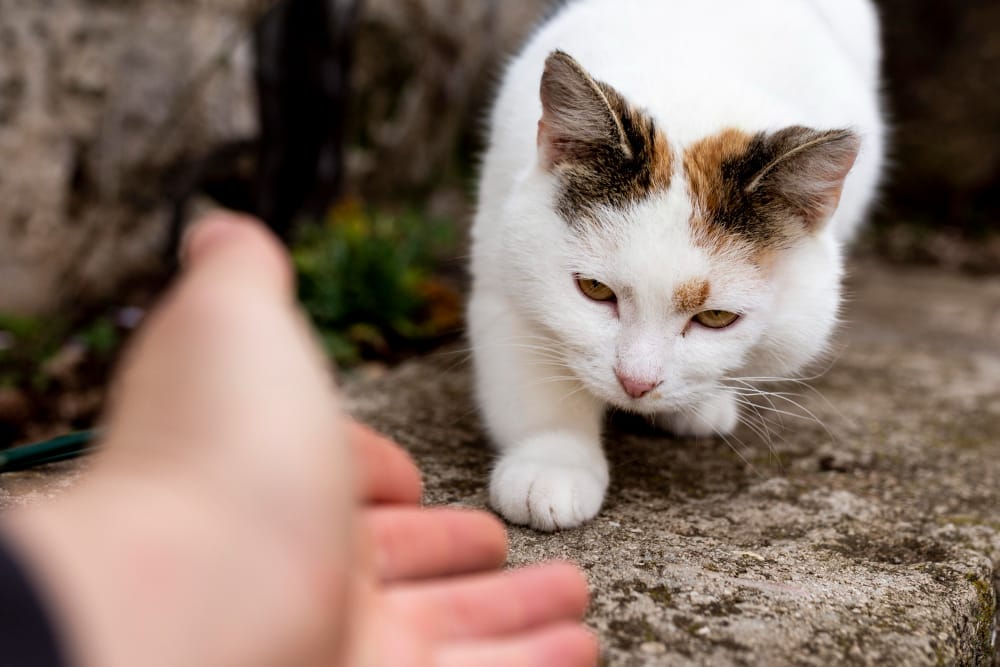
Prevention is always better than cure. Efforts focused on preventive education and support for individuals at risk of hoarding can be invaluable. Furthermore, support systems for hoarders that address their mental health needs and educate them on responsible animal care can help prevent escalation into hoarding behaviors.
See how you can get involved and help in a potential animal hoarding scenario: Report animal abuse and cruelty | The Humane Society of the United States
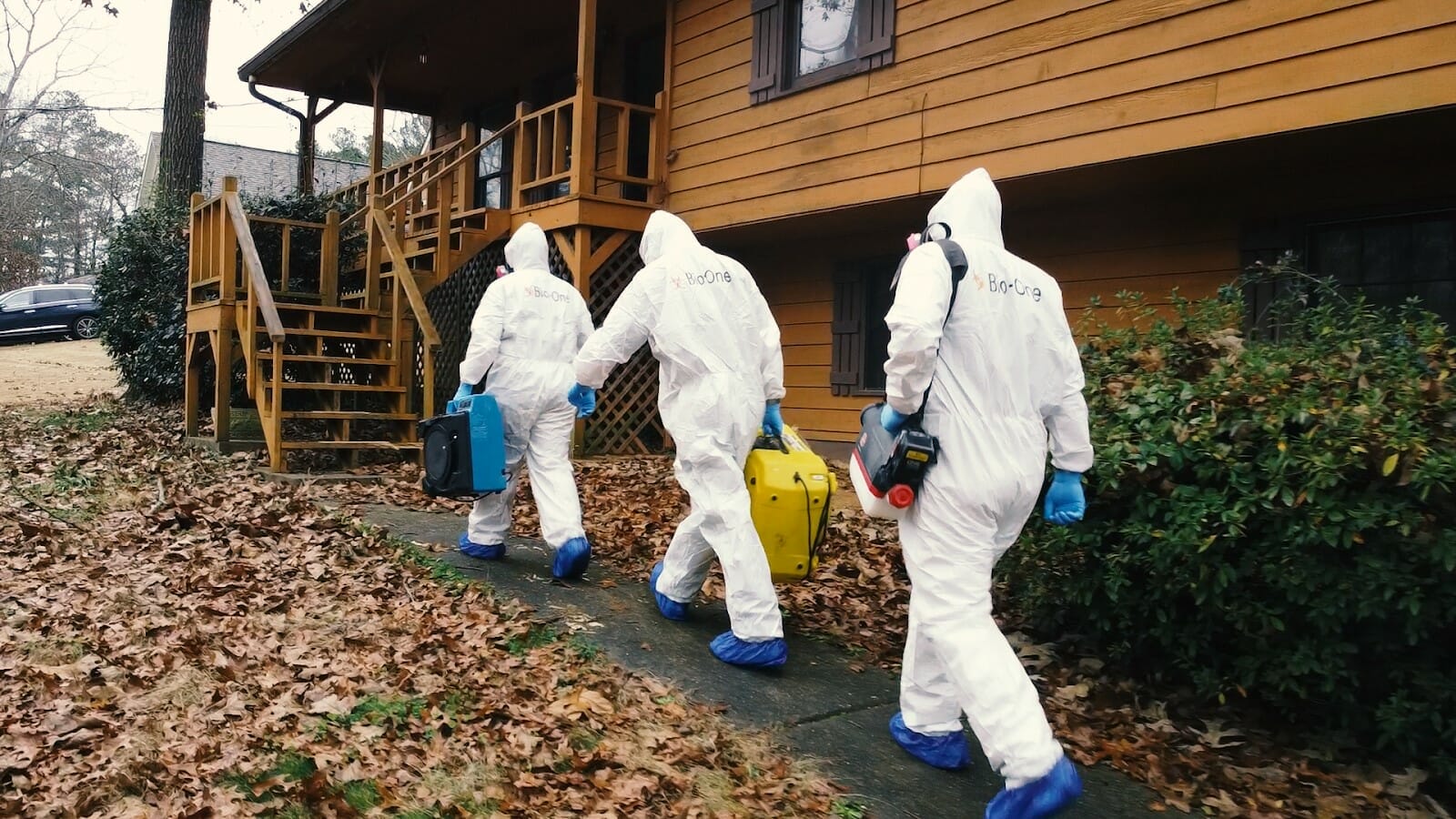
Our team at Bio-One of Pittsburgh can provide the necessary support, including network referrals for therapy, animal care, and legal support, to ensure every individual and animal involved in an animal hoarding case regains a healthy, nurturing environment. If you need help or know someone struggling with an animal hoarding situation, do not hesitate to reach out!
Bio-One of Pittsburgh is always ready to assist you in unexpected situations. Our expert specialists are always ready to assist you in dealing with highly pressurized situations that may be emotionally and physically draining, allowing you to focus on other vital activities while healing in a sanitary environment. Locally owned and operated, we provide the following:
Bio-One works closely with victim support centers nationwide and local authorities, communities, emergency services personnel, hoarding task forces, apartment communities, insurance companies, and other organizations to accomplish each customer's most efficient and superior service possible.
Many crime scene cleanup companies may face unexpected, unfortunate life events. Still, Bio-One is the right choice because of our expertise and profoundly caring and discreet specialists.
We are proud members of the NAPO Pittsburgh - National Association of Productivity & Organizing Professionals!
Bio-One of Pittsburgh serves the following Pennsylvania counties: Allegheny County, Washington County, Beaver County, Butler County, Armstrong County, Westmoreland County, Lawrence County, Greene County, Fayette County, and Mercer County.
We also serve the following cities and surrounding communities: from Allison Park all the way to Creighton, Crescent, Cuddy Curtisville, Millvale, Monroeville, Oakmont, Pitcairn, Pleasant Hills, Plum, Port Vue, Presto, Rankin, Rennerdale, Rural Ridge, Russellton, Sharpsburg, South Park to Springdale, we are ready to help you.
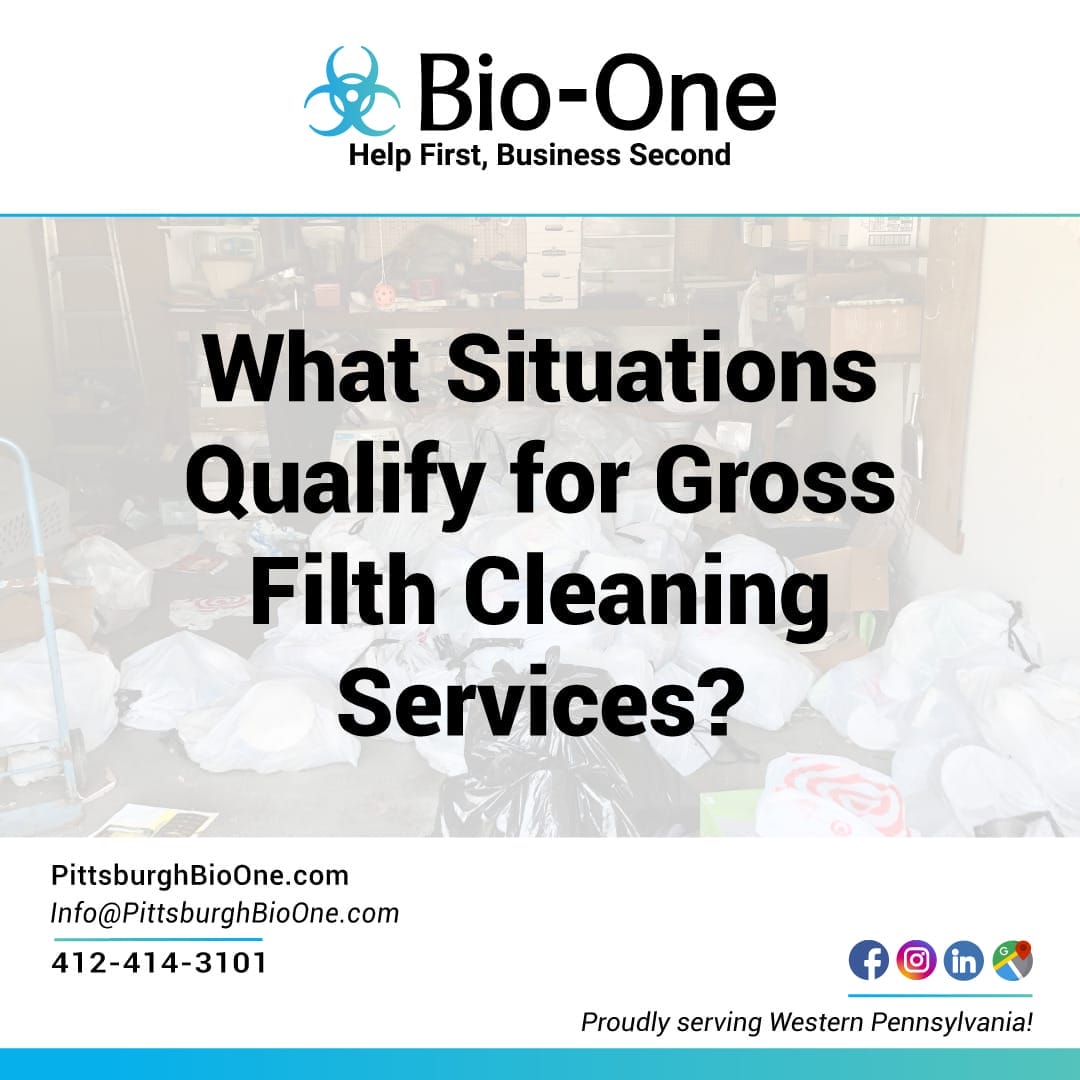
Gross filth can be defined as extreme clutter, uncleanliness, and disrepair that affect the health and safety of those in the environment. Many situations can lead to gross filth, and in most cases, professional cleaning services are required to restore the affected area to a healthy state. Whether it's hoarding, mold and water damage, sewage backups, or crime scenes, dealing with gross filth can be overwhelming and dangerous. In this blog post, we'll explore situations that often call for gross filth cleaning services.
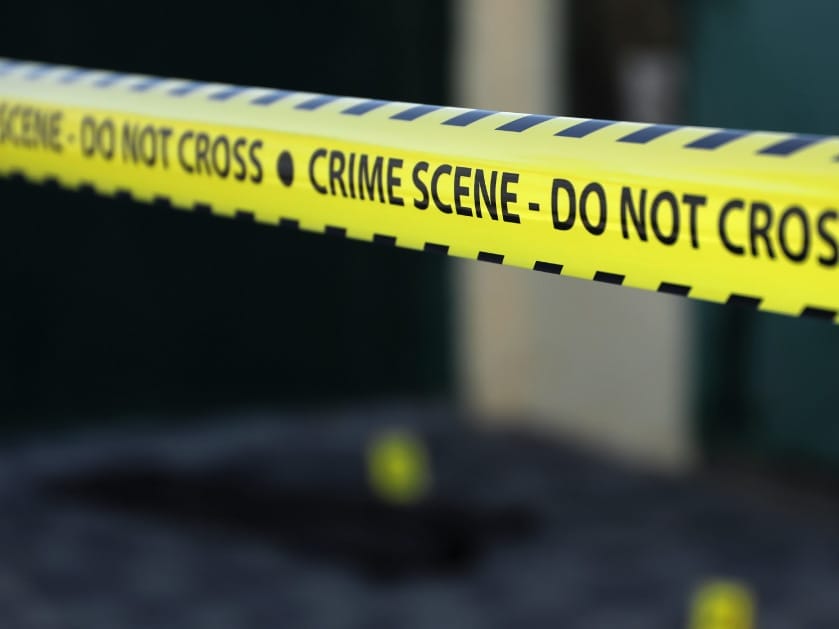
Crime scenes can be traumatic and can leave behind bodily fluids and other biohazardous materials. Blood spills and other hazards from crime scenes can pose health risks to those exposed to them, including viruses and bacteria. Exposure to blood and bodily fluids may result in the spread of diseases and infections, making it essential to have proper cleanup procedures in place.
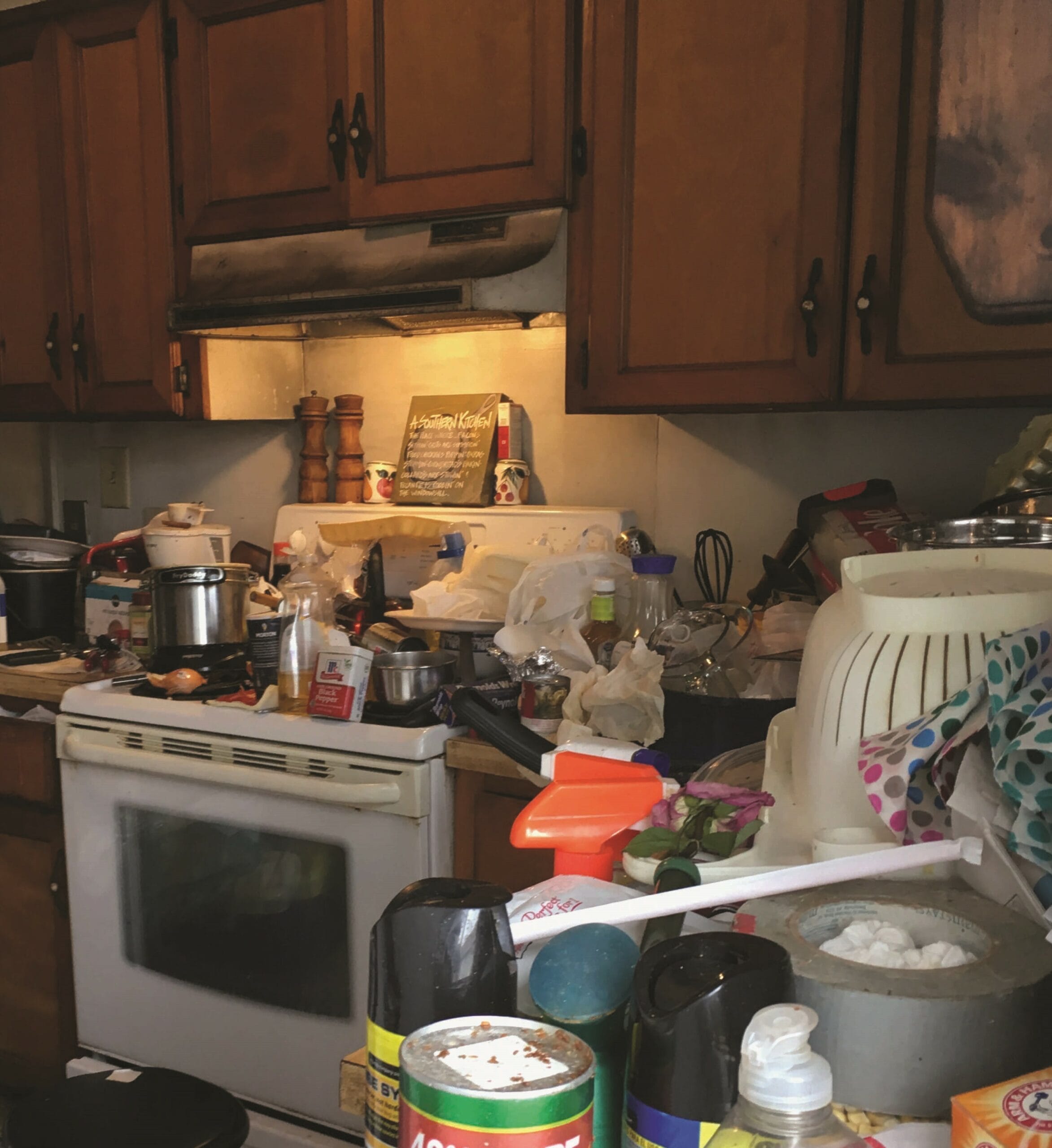
Hoarding affects a person's ability to discard or part with possessions. It can lead to the accumulation of clutter and debris that can quickly become a safety hazard. Hoarded homes are often filled with a variety of items, including garbage, food waste, and potentially dangerous materials like chemicals or biohazards. Hoarding also poses a fire risk as the clutter can easily fuel a fire and make it difficult for occupants to escape. In severe cases, hoarding can lead to structural damage to the property.
Learn more: Common Hazards in Hoarded Houses & How Bio-One Can Help
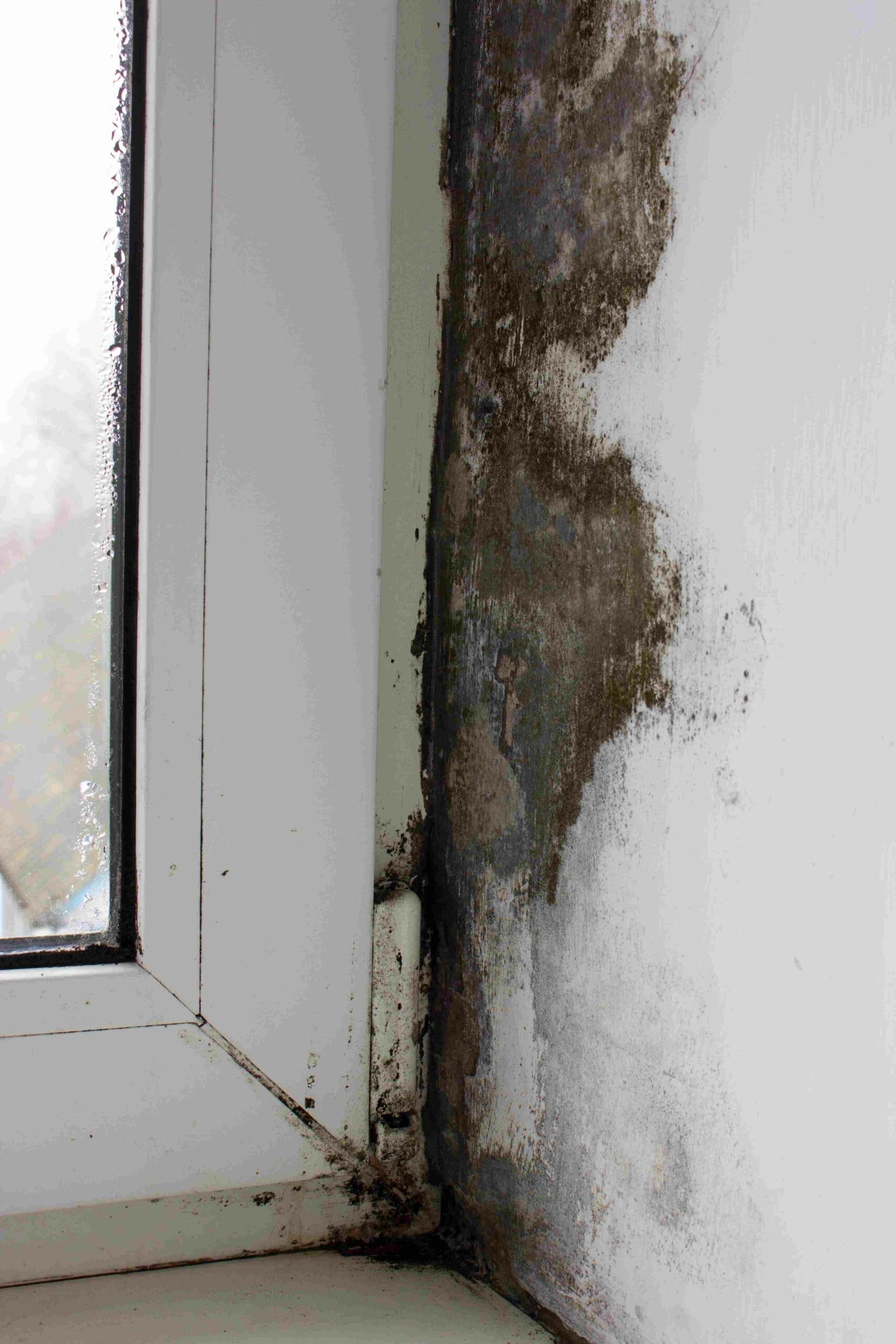
Mold growth can occur in humid and damp environments, leading to odors and respiratory problems. Water damage from floods, leaks, or sewage backups can also lead to the growth of mold, which can pose a serious threat to health if not handled immediately.
Learn more:4 Helpful Tips on House Restoration for Water Damage
Sewage backups can occur from clogs, pipe bursts, and flooding, and can lead to biohazard risks, water damage, and odors. These unwanted events may contain harmful pathogens that can cause serious diseases if not handled professionally.
Animal infestations such as rodents or insects can cause extensive damage to property and pose serious health risks. These pests can carry diseases, spread bacteria, and contaminate food sources. Proper cleanup and removal of any infestations is necessary to ensure the safety and well-being of occupants.
Other situations that can call for gross filth cleaning services include fire damage, animal hoarding, and chemical spills.
Learn more: CDC - Biological Hazards

At Bio-One of Pittsburgh, we can handle all types of gross filth cleaning situations. Our team follows strict protocols and measures to remove any harmful substances and materials and sanitize the areas. We understand the sensitive nature of these situations and work with compassion and discretion. Contact us for a free consultation in the Western Pennsylvania Area today!
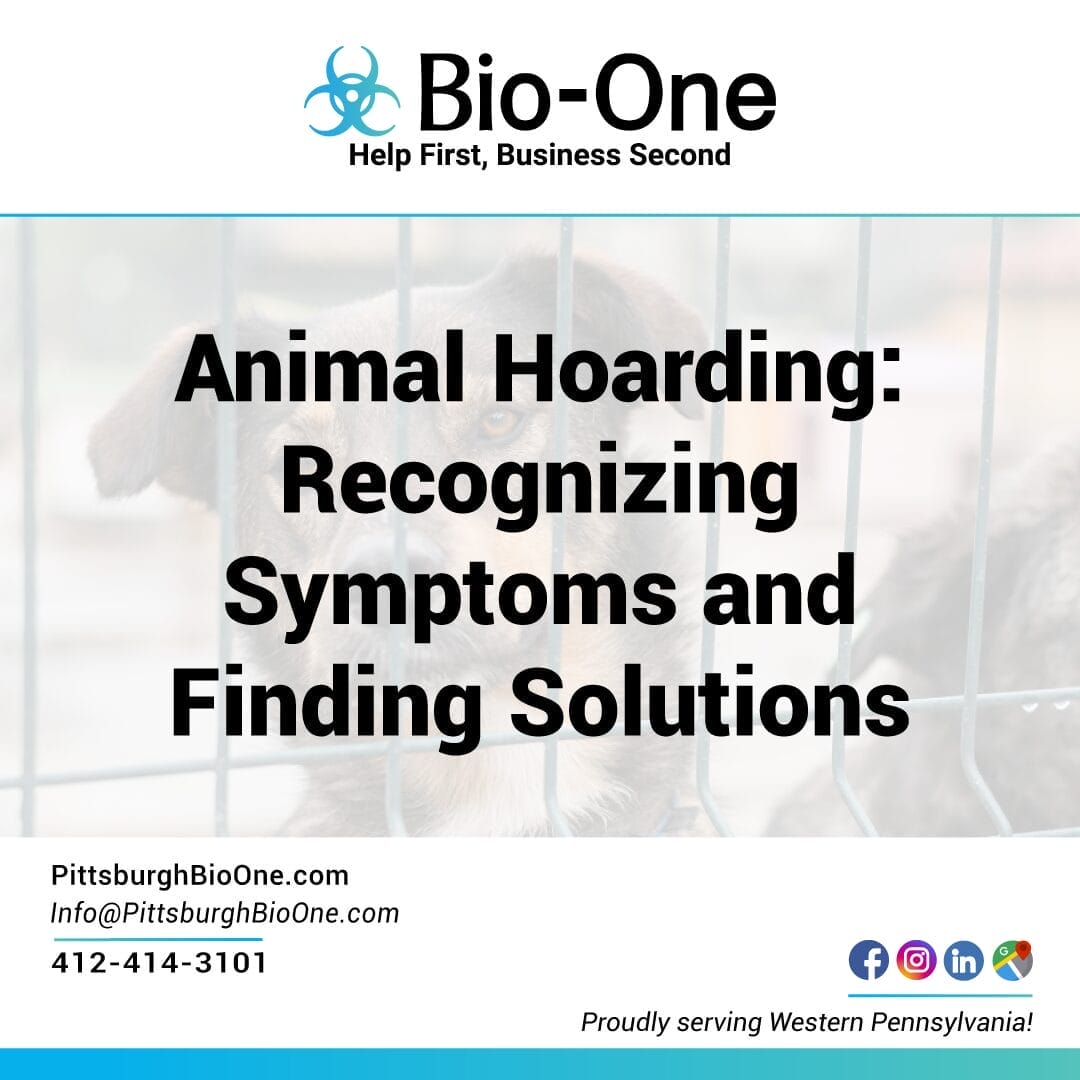
Animal hoarding is a severe mental health disorder that affects both people and animals' well-being. Hoarding is a compulsive behavior that involves accumulating vast amounts of animals that one cannot adequately manage. Animals suffer neglect and harm from a lack of food, water, and medical care. Identifying and understanding the symptoms of animal hoarding is critical in finding solutions that safeguard the animals and public safety. This post explores animal hoarding and the symptoms to watch out for.
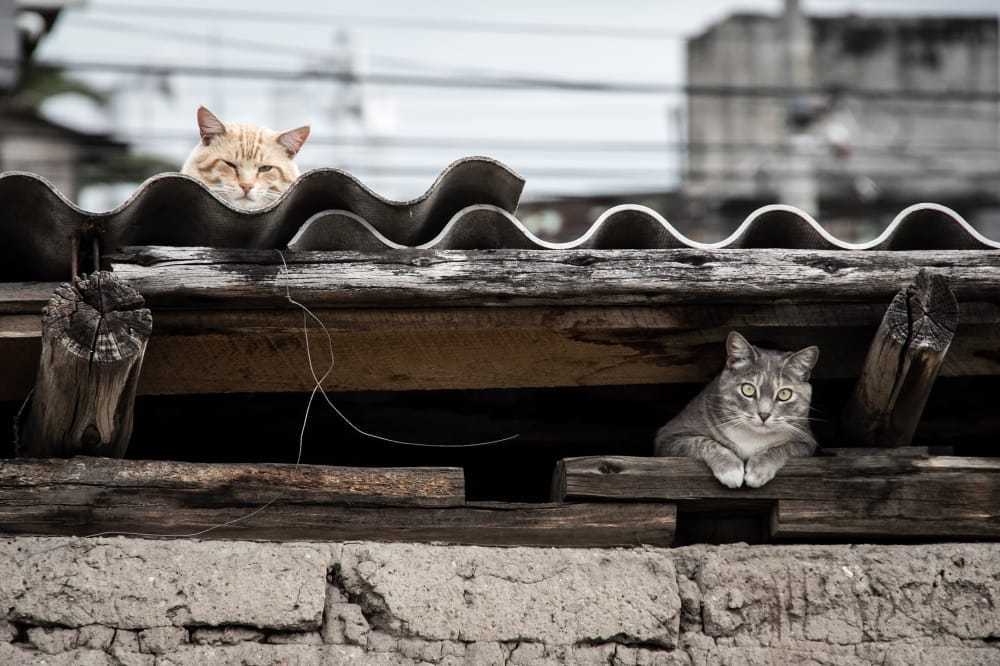
Animal hoarders rarely see the severe harm their behaviors cause to animals and society. They deny and justify the actions that are harming the animals. They may also perceive themselves as rescuing the animals. An animal hoarder is characterized by an intense need for control and security. The need for control leads them to be selfish, unprincipled, and inconsiderate of others' welfare. They have a high tolerance for filth and squalor associated with animal hoarding. The conditions in their home may pose a severe risk to public health.
A hoarded property is usually in a state of disarray and cluttered with excessive amounts of items, including animals. The animals may be cramped in small spaces, living among piles of trash, feces, and debris. The smell of ammonia from urine can be overwhelming and hazardous to both human and animal health. In extreme cases, there may be dead animals on the property, and the hoarder may not even realize it or acknowledge it. The chaos and overwhelming environment of a hoarded property can have severe psychological effects on both the animals and the hoarder.
The lack of food, water, and proper sanitation leads to diseases, parasites, and malnutrition. Behavioral problems are also a common occurrence, including aggression and a lack of socialization. Animals that survive permeate pet shelters, adding to the burden on animal welfare organizations that are already struggling to cope. Animal hoarders often hoard different types of animals, such as birds, cats, dogs, reptiles, and rodents.
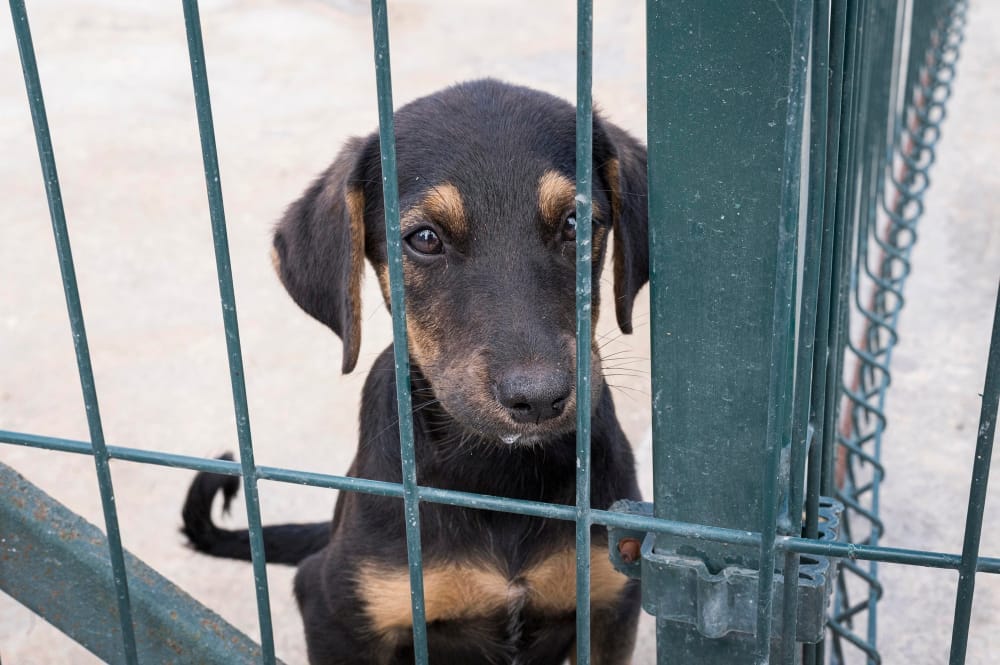
The conditions in an animal hoarder's home often have severe implications for public health. The unsanitary conditions create breeding grounds for diseases that can easily spread to other animals and humans. Animal hoarders are prone to acquiring zoonotic diseases like Salmonella, Q fever, Leptospirosis, and Hantavirus.
Children, elderly people, and people with compromised immune systems are at a higher risk of contracting illnesses from animal hoarding situations. Animal hoarding affects not only the animals involved but also the community.
Animal hoarding is a serious issue, and intervention is necessary to ensure the safety of animals and public health. In most cases, animal hoarders need psychological support to overcome the compulsive behavior that leads them to hoard animals. Social services, animal welfare organizations, and law enforcement agents need to work together to provide animal hoarders with the support they need to change their lives.
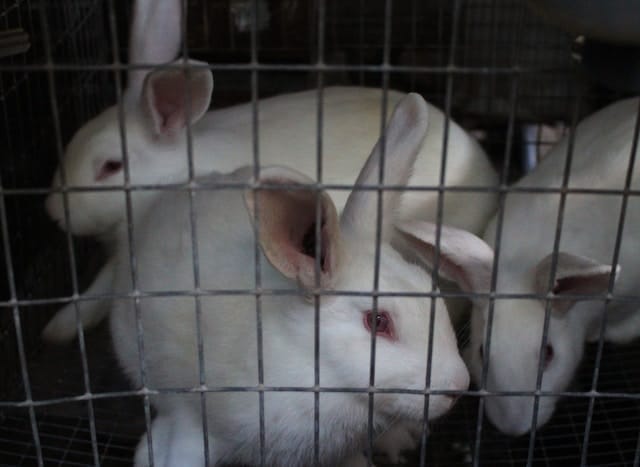
Understanding the signs of animal hoarding is critical in finding solutions that preserve animals' welfare and public health. If you are dealing with an animal hoarding situation, it is essential to seek professional help to ensure all victims' safety. Bio-One of Pittsburgh works hand in hand with animal welfare and law enforcement agencies to guarantee that both the animals and individuals receive the proper care they need.
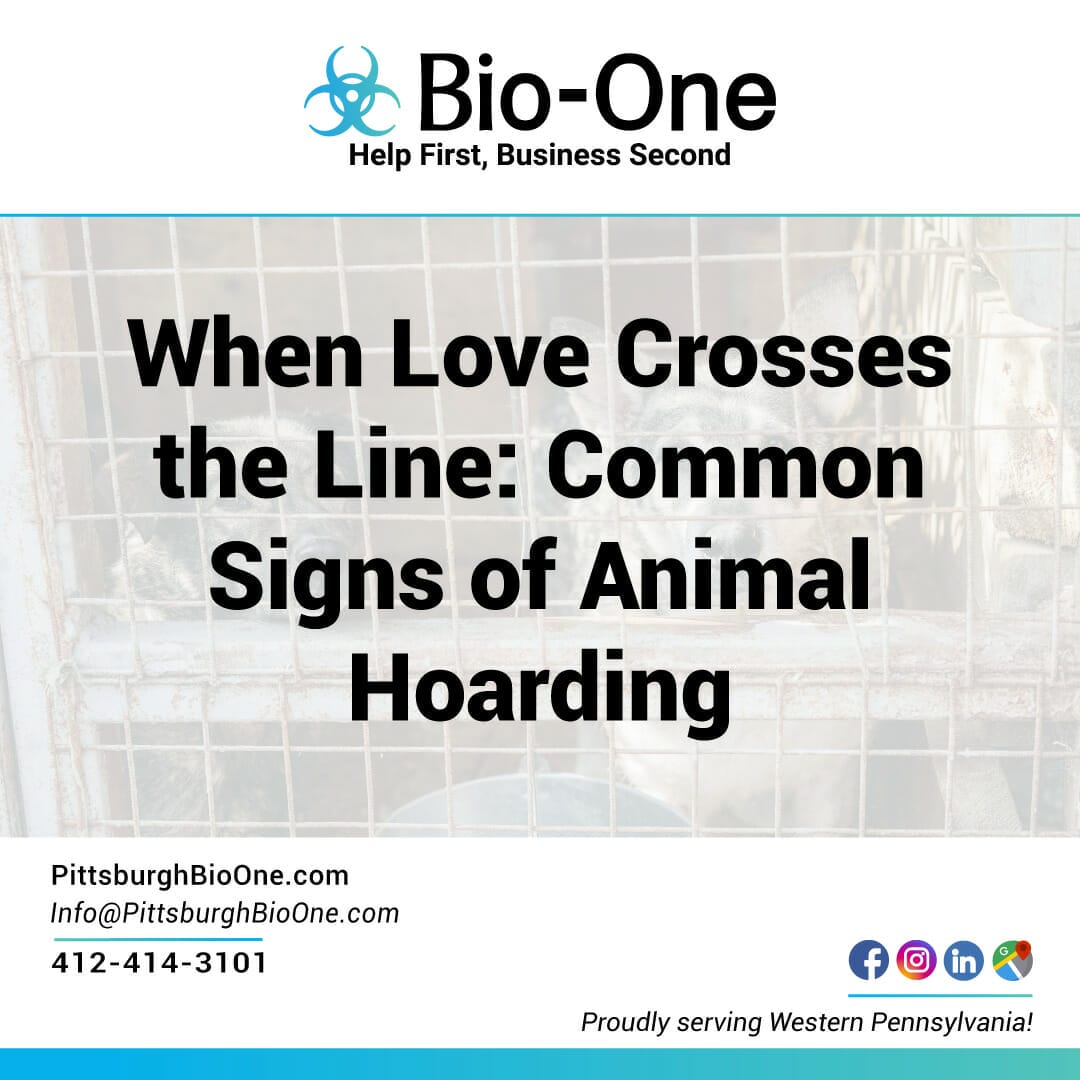
Animal hoarding is a complex issue that affects not just the animals in question but also the people in their lives. Most people are devoted to their pets and consider them to be important members of the family. However, when love crosses the line, it can lead to animal hoarding. This is a situation where individuals keep more animals than they can care for, and the animals often end up living in unsafe and unhealthy conditions. In this blog post, we will explore the common signs of animal hoarding and offer some insight into what you can do if you observe this situation in your neighborhood.
The first common sign of animal hoarding is unusual odors. If you smell strong, unpleasant smells coming from a household and notice numerous animals inside, it may be an indication of an animal hoarding case. The odors can be a result of urine, feces, and other waste products, that are not adequately disposed of. These smells can also be dangerous to human health, and swift action should be taken.

Another sign to look out for is the physical condition of the animals. Most animals in hoarding situations are not well taken care of and tend to be malnourished, sick, or injured. They may also have overgrown nails, matted fur, and parasites. These conditions can cause the animals to suffer and lead to their untimely death.
Piles of litter or debris, including fecal matter, strewn or stacked high in areas of the home, can also be a sign of animal hoarding. This clutter and/or daily waste create an environment that is not healthy for both the animals and humans living in the household. The fecal matter, for example, can attract pests, which can cause further harm to the animals and the living conditions to deteriorate further.
In severe cases of animal hoarding, you may come across dead animals on the property. Due to the large number of animals living in a confined space and inadequate care, some may not survive. These deceased animals must be removed promptly to prevent further harm to human health and safety.
Dead carcasses create a significant risk to the overall well-being of those living in the household. It's not hygienic and can breed dangerous and deadly diseases.

Animal hoarders are often secretive and tend to avoid letting anyone inside their homes. They may make excuses for not allowing visitors, claiming they are 'too busy' or 'unwell'. This behavior is a red flag that something is not right in the home, and authorities should be notified immediately.
Animal hoarding requires a multi-faceted approach to address it effectively. The first step is to recognize that animal hoarders often need psychological help, as their behavior stems from underlying mental health issues.
Interventions should include counseling and therapy sessions to address the root cause of the hoarding behavior. Additionally, community support services, such as financial aid, food assistance, and housing assistance, can help alleviate the hoarder's stress and reduce the need for hoarding animals.
Furthermore, animal welfare organizations and local authorities should work together to remove the animals from the hoarder's care. This process should be done sensitively, considering the individual's mental state and providing necessary support throughout.
When you observe the common signs of animal hoarding, you mustn't ignore them. Hoarding situations cause harm both to animals and humans, and they require immediate attention. If you suspect any hoarding situation in your neighborhood, contact Bio-One Pittsburgh. Bio-One can remediate animal hoarding and help individuals connect to professionals to treat hoarding.
